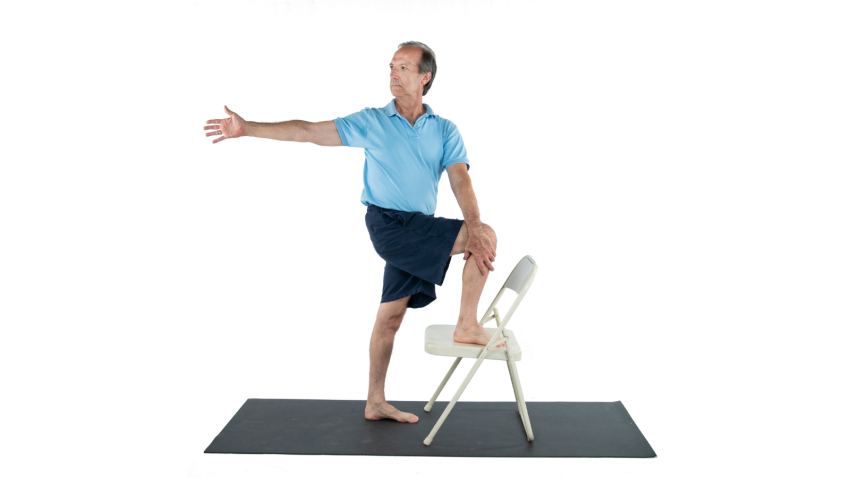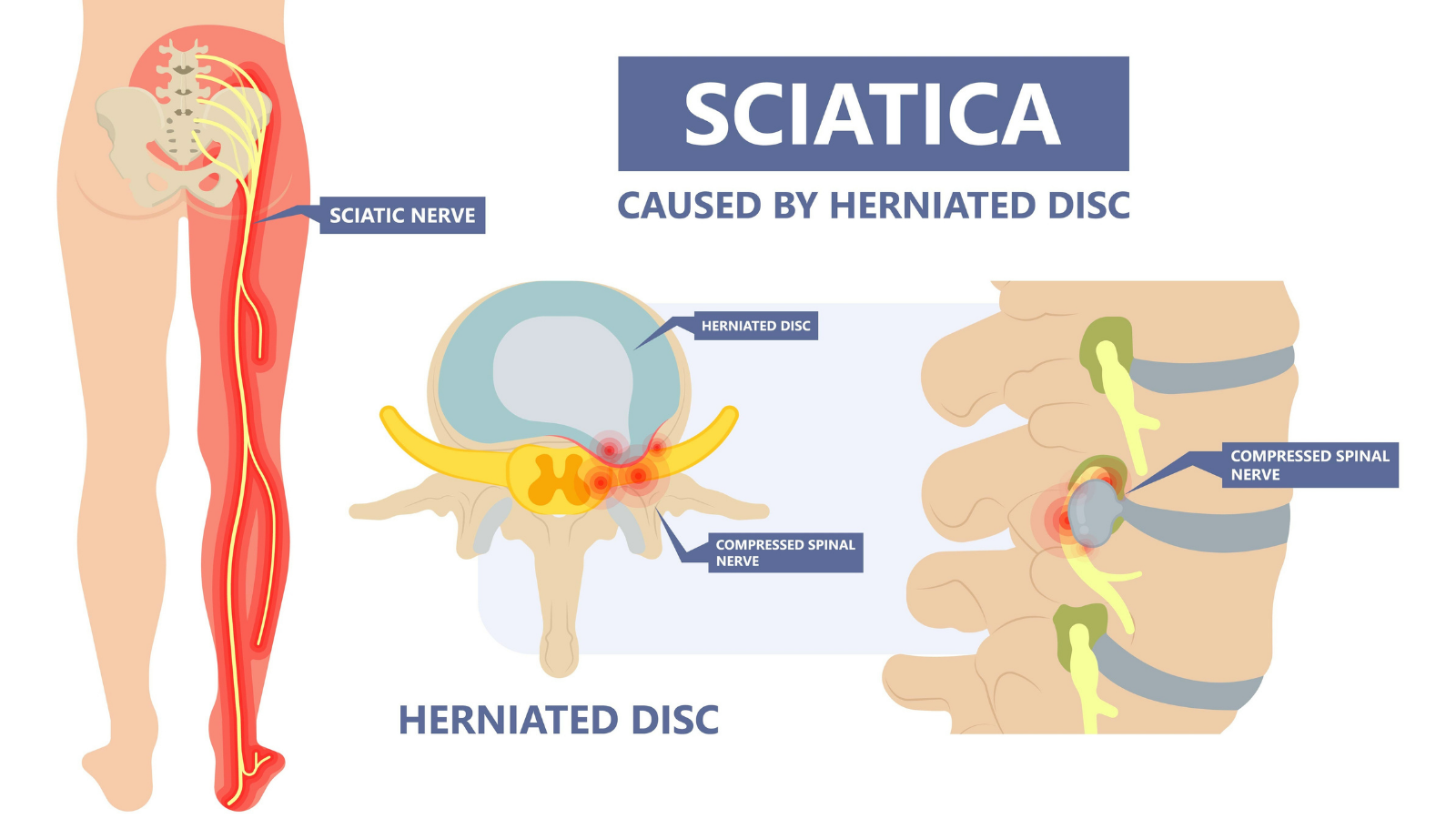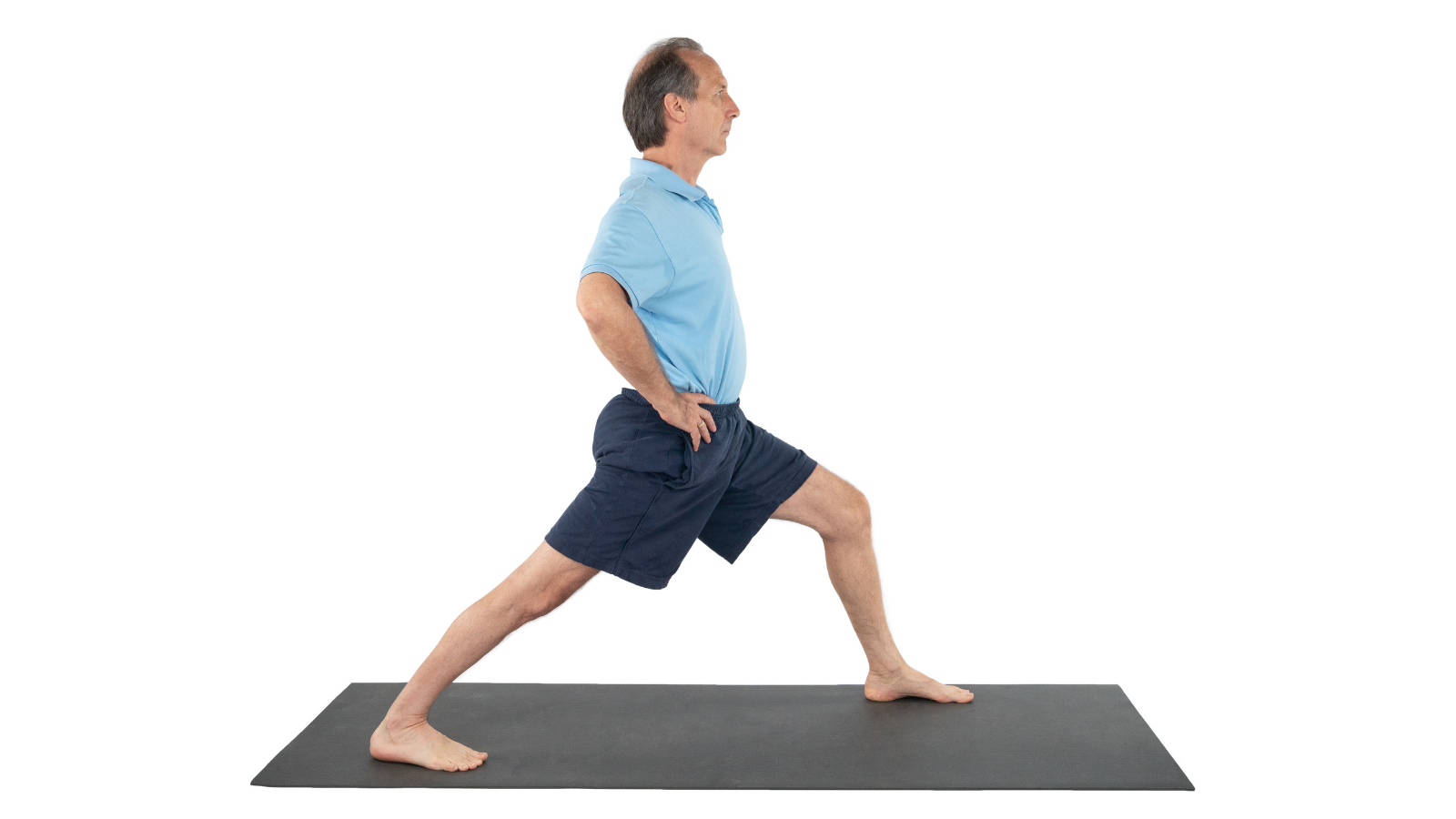View basket (0 items $0.00)

Understanding Your Sciatic Nerve Pain
Oh my sciatica!
A common form of leg pain, sciatica, has become a general term used to describe any type of discomfort or neurological symptoms, including sharp pain, throbbing, burning, tingling, weakness and numbness, felt along the sciatic nerve. However, the term “sciatica” is often misused. Not everyone suffering from sciatic nerve pain has sciatica — an important distinction.
While the culprit of your leg pain may very well be an irritated sciatic nerve, it’s the cause, or underlying medical condition, that determines whether or not you technically have sciatica and (more importantly) the course of action for treatment.
In order to fully understand the root causes of sciatica, let’s first take a closer look at the sciatic nerve.
The Sciatic Nerve
 The largest and longest single nerve in the body, the sciatic nerve is composed of individual nerve roots that branch out of the lower spine and combine to form one large nerve (about the thickness of a pinkie finger) that extends down the back of each leg and into each foot.
The largest and longest single nerve in the body, the sciatic nerve is composed of individual nerve roots that branch out of the lower spine and combine to form one large nerve (about the thickness of a pinkie finger) that extends down the back of each leg and into each foot.
Each of the nerve roots exits through a gap between two vertebral segments: between lumbar segment four and five (L4 and L5); L5 and sacral segment one (S1); and the first three openings in the sacral spine for a total of five nerve roots that group together deep in the buttocks before traveling down the back of the thigh and branching out into the lower leg, foot and toes.
The slightest problem or dysfunction in the low lumbar or sacral region of the spine can easily irritate the individual nerve roots, radiating pain down along the sciatic nerve; while the large nerve can also be compressed by tight gluteal or hamstring muscles, causing the same symptoms.
Sciatica Defined
Sciatica (a set of neurological symptoms) occurs when one of the sciatic nerve roots becomes compressed by another spinal structure, most commonly between L5 and S1. By definition sciatica is a form of radicular pain—pain directly caused by an irritated or injured nerve root that radiates from the spinal cord into the lower extremities along the large nerve.
Symptoms, which range from intense and debilitating to irritating and intermittent, vary according to which nerve root is being impinged; however, multiple nerve roots could be irritated presenting a larger variety of symptoms.
Common Causes of Sciatica (and Sciatic Nerve Pain)
-
Herniated or Bulging Disc
Sciatica is the most common symptom of a herniated or bulging disc in the low spine, which usually occurs between lumbar segments 4 and 5, or L5 and S1.
A herniated disc occurs when the soft inner core of a vertebral disc, which acts as a cushion between vertebrae, leaks through a tear in the outer fibrous layer of cartilage toward the spinal column, placing pressure on a sensitive nerve root. Bulging disc occurs when the whole disc (intact) becomes displaced, creating a small bulge that protrudes into the spinal canal, potentially compressing a nerve and causing sciatica. -
Degenerative Disc Disease
One of the most common causes of low back pain, degenerative disc disease is a condition in which pain, weakness or numbness is caused by a damaged disc due to excessive degeneration. When degenerative disc disease occurs, inflammatory proteins produced inside the disc are released and irritate the associated nerve roots often causing sciatica. -
Isthmic Spondylolisthesis
Isthmic spondylolisthesis is a disorder that occurs when one vertebrae slips forward over the one below due to a small stress fracture in the piece of bone that joins the two segments on the backside of the spinal column. The stress fracture, slipped vertebra, and collapsed space almost always result in an impinged nerve root(s), causing radicular pain. -
Lumbar Spinal Stenosis
A condition caused by abnormal narrowing of the spinal canal (the open spaces within the spine), spinal stenosis places pressure on the spinal cord and nerve roots, commonly causing sciatica. -
Piriformis Syndrome
The sciatic nerve runs under the small piriformis muscle deep in the buttocks. Piriformis syndrome occurs when the piriformis spasms and tightens, catching and irritating the sciatic nerve and causing tenderness in the buttocks and sciatica-like pain down the back of the leg.
 Often confused with sciatica, piriformis syndrome is not a true radiculopathy (stemming from the spinal column), and treatment almost always involves stretching the piriformis muscle. This is one area where yoga can really excel. Stretches like Supine Pigeon Pose or Supine Twists can sometimes be useful to release tension in the piriformis muscle to bring relief.
Often confused with sciatica, piriformis syndrome is not a true radiculopathy (stemming from the spinal column), and treatment almost always involves stretching the piriformis muscle. This is one area where yoga can really excel. Stretches like Supine Pigeon Pose or Supine Twists can sometimes be useful to release tension in the piriformis muscle to bring relief. -
Sacroiliac Joint Dysfunction
People experiencing sacroiliac (SI) joint pain, which lies on either side of the bottom of the spine and join the sacrum and pelvis, will occasionally also suffer from sciatica-like symptoms. When the SI joint becomes irritated, so can the nerve root that happens to lie on top of it, causing pain.
Determining and fully understanding the source of your nerve pain is the crucial first step in addressing your condition. While the symptoms may be the same, the effective and appropriate treatment depends on the underlying medical condition, and each case must be treated on an individual basis.
 If you know for certain that the source of your sciatica symptoms is a tight piriformis muscle compressing the large nerve underneath it then there are simple ways to work on releasing the muscle. Check out this Olga Kabel article and the attached home practice, designed to release piriformis tension using the Contract-Relax-Stretch principle.
If you know for certain that the source of your sciatica symptoms is a tight piriformis muscle compressing the large nerve underneath it then there are simple ways to work on releasing the muscle. Check out this Olga Kabel article and the attached home practice, designed to release piriformis tension using the Contract-Relax-Stretch principle.
For those with SI joint dysfunction, working with a trained yoga therapist or physical therapist to strengthen the abductor and inner core muscles and stabilize the pelvis can really help reduce the amount of sciatic nerve pain. However, radicular pain (true sciatica), whether caused by a bulging disc or other abnormality in the lumbar spine, is a much larger, more complex issue that can be made worse with stretching. Therefore it’s always best to work with your orthopedic doctor on a plan of treatment.
Another article from YogaUOnline and Dr. Ray Long-Stabilizing the Sacroiliac Joint:The Piriformis Muscle in Yoga.
Study with YogaUOnline, Dr. Loren Fishman and Ellen Saltonstall - Yoga for Sciatica.
 Meagan McCrary is an experienced yoga teacher (E-RYT 500) and writer with a passion for helping people find more comfort, clarity, compassion and joy on the mat and in their lives. She is the author of Pick Your Yoga Practice: Exploring and Understanding Different Styles of Yoga, a comprehensive encyclopedia of prominent yoga styles, including each system’s teaching methodology, elements of practice, philosophical and spiritual underpinnings, class structure, physical exertion and personal attention. Currently living in Los Angeles, Meagan teaches at the various Equinox Sports Clubs, works privately with clients and leads retreats internationally. You can find her blog, teaching schedule and latest offerings at www.MeaganMcCrary.com
Meagan McCrary is an experienced yoga teacher (E-RYT 500) and writer with a passion for helping people find more comfort, clarity, compassion and joy on the mat and in their lives. She is the author of Pick Your Yoga Practice: Exploring and Understanding Different Styles of Yoga, a comprehensive encyclopedia of prominent yoga styles, including each system’s teaching methodology, elements of practice, philosophical and spiritual underpinnings, class structure, physical exertion and personal attention. Currently living in Los Angeles, Meagan teaches at the various Equinox Sports Clubs, works privately with clients and leads retreats internationally. You can find her blog, teaching schedule and latest offerings at www.MeaganMcCrary.com
Featured Courses









